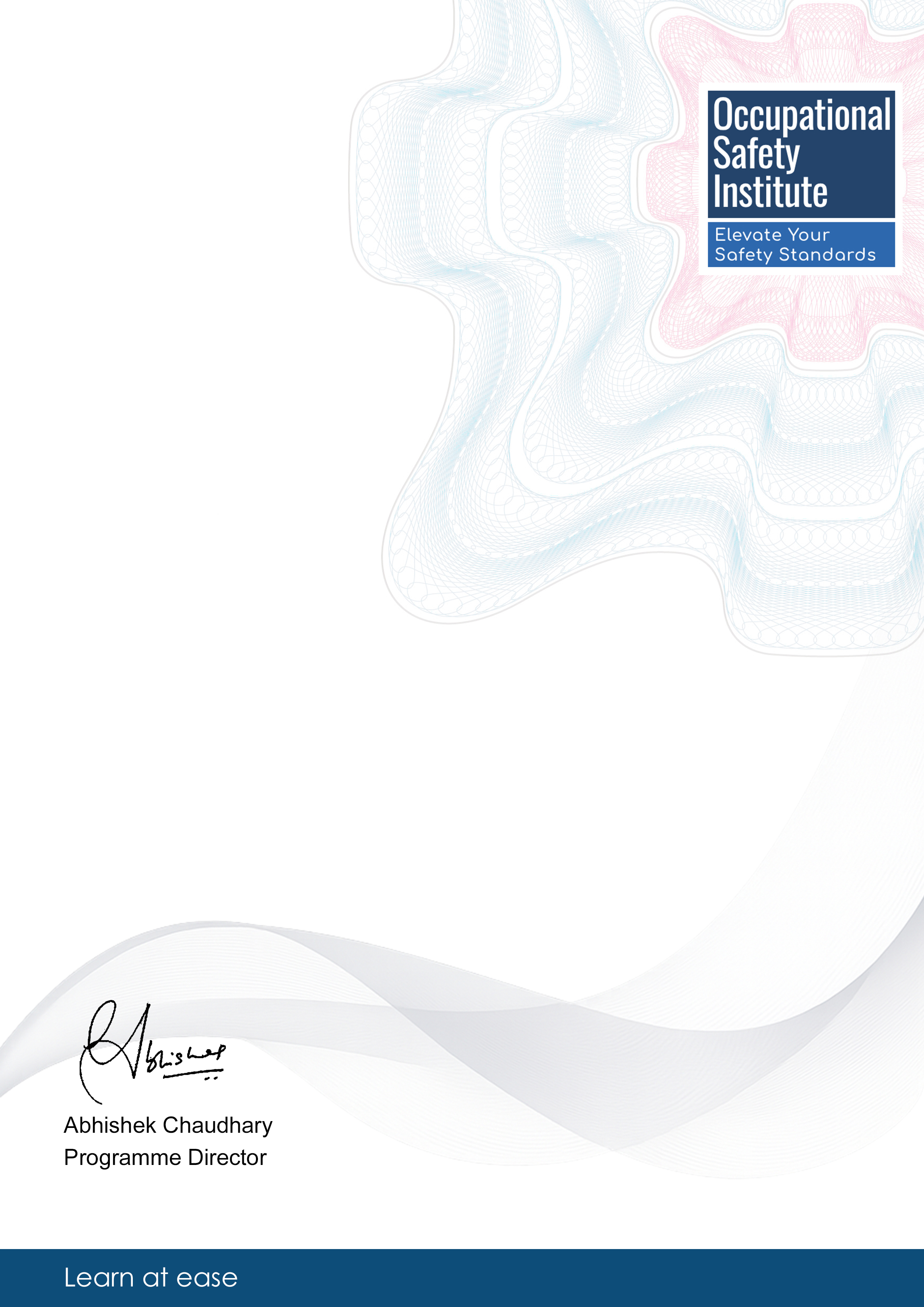Module 1: Fundamentals of Communication in Health and Safety
Introduction to the importance of effective communication in occupational health and safety settings. Covers basic communication models and principles.
This course is designed to help professionals master communication in occupational health and safety environments. It is ideal for individuals working in health and safety roles who want to enhance their communication skills to ensure a safer workplace. The course stands out for its practical approach, real-world scenarios, and hands-on learning experiences. Participants will benefit from improved safety practices, enhanced risk communication, and better overall workplace communication skills.
4.4/5
|96 reviews
|418 students enrolled
Comprehensive, industry-recognized certification that enhances your professional credentials
Self-paced online learning with 24/7 access to course materials for maximum flexibility
Practical knowledge and skills that can be immediately applied in your workplace
Introduction to the importance of effective communication in occupational health and safety settings. Covers basic communication models and principles.
Exploration of risk communication techniques specific to health and safety environments. Focus on conveying risks clearly and promoting safety behaviors.
Understanding the use of various communication channels to deliver safety messages effectively. Includes digital communication tools and group communication dynamics.
Adapting safety messages for diverse audiences within an organization. Strategies for conveying technical information to non-specialists.
Developing active listening skills to enhance information exchange in safety contexts. Importance of feedback mechanisms for continuous improvement.
This programme includes comprehensive study materials designed to support your learning journey and offers maximum flexibility, allowing you to study at your own pace and at a time that suits you best.
You will have access to online podcasts with expert audio commentary.
In addition, you'll benefit from student support via automatic live chat.
Assessments for the programme are conducted online through multiple-choice questions that are carefully designed to evaluate your understanding of the course content.
These assessments are time-bound, encouraging learners to think critically and manage their time effectively while demonstrating their knowledge in a structured and efficient manner.
Professionals with strong communication skills in health and safety are in high demand across industries. The ability to effectively convey safety information and promote a culture of safety can lead to rewarding career opportunities.
Career progression in health and safety communication often involves roles such as Safety Communication Specialist, Health and Safety Trainer, or Safety Program Coordinator. Professionals can advance into management positions and specialize in safety communication strategies.
Responsible for developing and implementing safety communication strategies to promote workplace safety.
Conducts training sessions on safety protocols and communication practices for employees.
Coordinates safety programs and initiatives within an organization, focusing on effective communication of safety procedures.
Professionals with expertise in occupational health and safety communication have opportunities for networking with industry experts, pursuing advanced certifications in safety communication, furthering their education in related fields, and gaining recognition for their contributions to workplace safety.
Safety Coordinator
"Mastering Communication in Occupational Health and Safety Environments taught me how to develop clear safety messages for diverse stakeholders, improving our safety protocols significantly."
Occupational Health Specialist
"The course enhanced my risk communication skills, allowing me to promote safety awareness effectively across different communication channels in the workplace."
Health and Safety Officer
"I learned to apply active listening techniques from the course, which has greatly improved information exchange and overall communication in occupational health and safety contexts."
Safety Engineer
"Mastering Communication in Occupational Health and Safety Environments provided me with practical approaches and real-world scenarios, enabling me to implement effective safety practices seamlessly."
Upon successful completion of this course, you will receive a certificate similar to the one shown below:

Undergraduate Certificate Mastering Communication in Occupational Health and Safety Environments
is awarded to
Student Name
Awarded: November 2025
Blockchain ID: 111111111111-eeeeee-2ddddddd-00000
While some basic understanding of health and safety principles is recommended, the course is designed to benefit professionals at all levels.
Participants can expect to spend approximately X hours per week on coursework, including lectures, assignments, and practical exercises.
Yes, participants who successfully complete the course requirements will receive a certificate of completion in Mastering Communication in Occupational Health and Safety Environments.
Fire Safety Planning and Preparedness
This course is designed to equip professionals with the kno…
Safety Compliance Monitoring with Generative AI and Machine Learning
This course on Safety Compliance Monitoring with Generative…
Implementing Machine Learning Solutions for Health and Safety Compliance
This course is designed for health and safety professionals…
Health and Safety Compliance in Accounting Processes at Dutch Windmills
This course focuses on health and safety compliance in acco…
Disclaimer: This certificate is not intended to replace or serve as an equivalent to obtaining a formal degree or diploma. This programme is structured for professional enrichment and is offered independently of any formal accreditation framework.